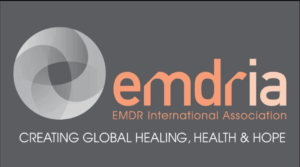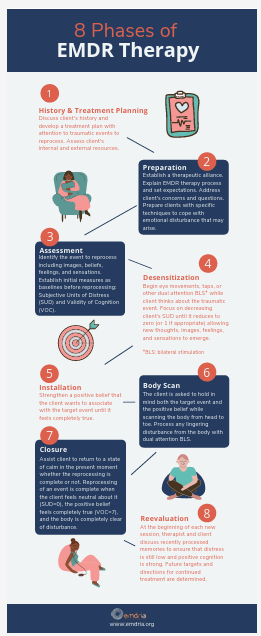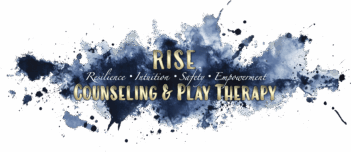
EMDR
The goal of EMDR therapy is to reduce the level of distress and promote/create adaptive beliefs to support healing and thriving. EMDR stands for Eye Movement Desensitization Reprocessing. Francine Shapiro developed EMDR in 1987. Now, there is an abundance of published research and protocols. The same way the body heals itself naturally, the mind can heal as well.
When trauma and unprocessed memories impact functioning, life can be challenging, and the brain is blocked from healing. Much like REM (Rapid Eye Movement) during sleep, EMDR utilizes the same mechanism of bilateral stimulation of the brain. During an EMDR session, you are fully awake and in control. The brain works so beautifully to do the hard work for you by connecting what needs to heal along the trauma thread from the target (memory) of your choice. Throughout reprocessing, your brain will utilize emotions, body sensations, images/memories, and negative beliefs.
There are 8 phases of EMDR. A skilled EMDR clinician will help prepare you for the EMDR experience by establishing trust and safety, develop EMDR resourcing (tools to regulate), and complete a history intake to assist with choosing a target that is safest for you.
EMDR is the gold standard of treatment for all things trauma and emotional distress. EMDR also helps treat anxiety and panic attacks, depression and negative cognitions, complicated grief, somatic support or pain, phobias, OCD, sleep issues, performance anxiety, and self-esteem enhancement. EMDR doesn’t always need words, the body keeps the score. EMDR can be used with ALL ages, in various creative ways, and in conjunction with other modalities.


